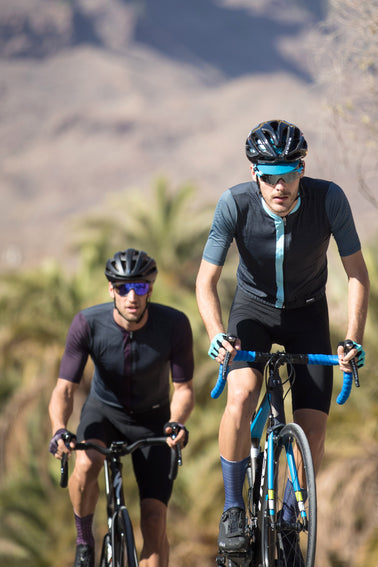We're ecstatic to show you the ropes of mountain biking, a thrilling sport. It is essential to master the fundamentals as starters. Getting on the right bike, being properly equipped, learning essential tactics, and putting safety first are all things we'll cover. Furthermore, we have some incredible routes to discover. Now is the time to get everyone's adrenaline pumping!
Choosing the Right Mountain Bike
Selecting a bike suitable for your needs and talents before you embark on the exciting world of mountain biking is essential. What matters more than the colour or model is the bike's functionality and how it will help you achieve your bicycling objectives.
Mountain bikes can be broadly classified into three categories: cross-country, trail, and all-mountain. A cross-country bike could be the best option for a beginner. Long, winding paths are a fantastic fit for their efficient design. On the other hand, an all-mountain bike could be more suited to more difficult terrains. Tougher terrain and steeper descents are their strong suits.
The size of the bike is another factor to think about. There is no universal solution. For optimal comfort and control, selecting a bike well-suited to your body type is important. The budget must also be considered. Several high-quality bikes are available that won't put a dent in your money.
Basic Mountain Biking Gear
Now that you have the ideal bike, what about the other necessities for your mountain riding excursions? A properly fitting helmet is an absolute necessity for the safety of participants in this exciting activity. Finding one with adequate airflow will keep you cool on the trails—not it's only about protecting your noggin.
After that, a good pair of riding gloves is an essential piece of equipment. In addition to protecting your hands from cuts and scrapes, they provide much-needed padding for those choppy rides. Equally important is eye protection. Protect your eyes from dust, debris, and the sun by donning a pair of sunglasses or a pair of goggles.
Now, let's move on to the bike shorts. Designed to offer comfort on lengthy rides, these are cushioned. Also, remember to bring a water bottle. Particularly on warmer days, it is crucial to stay hydrated.
Finally, buy a repair kit. Believe us when we say that the last thing you want is to be in the wilderness on your own with a flat tire or a broken chain. It might save your life; it's small, lightweight, and portable.
Understanding Mountain Biking Techniques
Now that you have all the necessary equipment let's jump into the fundamental mountain riding methods.
Learning the "ready" or "attack" posture should be your first order of business. When you're not pedalling, this is the position you should adopt: bent knees and elbows, butt off the saddle, and eyes focused front.
Learning how to shift gears is the next step. What matters most is the timing. If you want to keep your chain in good condition, you should change gears when you're not pushing yourself too hard. You have to be able to read the terrain and change your strategy accordingly.
You should also master the art of braking. It's about control, not merely stopping. Instead of slamming on the brakes, try feathering them by slowly squeezing and releasing them.
Our last topic will be cornering. Leaning our bikes, not our body, is the key here. To preserve traction, you need to keep your weight on the tires.
Safety Tips for New Riders
Now that you're a proficient rider let's go on to the most important safety precautions you should take.
Wearing a helmet should be your priority. It's an absolute must-have, not merely a decent suggestion. To avoid harm to your head, it is the most effective method. The ideal fit for a helmet is a snug fit with a secure fastening.
Your mountain riding equipment is the next topic we should cover. Protect your hands from blisters and improve your grip by wearing gloves. You might also consider using knee and elbow pads to protect yourself from painful scrapes and bruises. Riding in poor light requires lights and reflective gear, but wearing bright clothing can help others see you.
We must not overlook your bicycle. Before you hit the trails, make sure it's in good shape. Be sure to inspect the tires, brakes, and gears frequently.
Remember to maintain control, keep within your skill level, and show respect to other trail users while you're out there. While mountain riding is fun, your safety must always come first.
Exploring Popular Mountain Biking Trails
After ensuring you're safe, take a deep dive into the thrilling world of well-known mountain biking routes. There are innumerable trails worldwide, each with its obstacles and spectacular vistas. So that you may begin organizing your trips, we will showcase some of the top ones.
Starting with Moab, Utah, there's the Slickrock Trail. The circuit is 10.5 miles long and has exciting and difficult terrain. Slickrock is the only surface on this must-ride mountain bike route.
The Flume Trail, which is close to Nevada's Lake Tahoe, is another must-see. Hikers can take in breathtaking panoramas of the lake and the Sierra Nevada mountains along this 14-mile path. For those just starting, it's perfect because it isn't excessively technical.
East Burke, Vermont, is home to the Kingdom Trails, the last destination. A variety of singletrack and downhill riding is available over this 100-mile network. Thanks to its varied terrain, it caters to bikers of all abilities.
Always wear protective gear and be cautious; safety is paramount. It is now time to embark on the trails! Any path you choose, whether a travel path or a secret treasure, will lead you to exciting new experiences.




